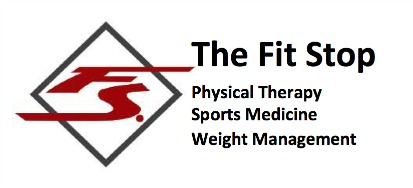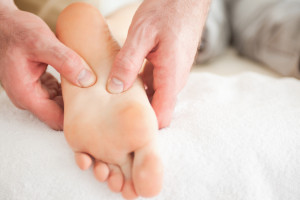Physical Therapy For Plantar Fasciitis
“I can’t walk without it hurting.”
“The first steps in the morning are the worst.”
“It feels like someone is digging an ice pick in the bottom of my foot.”
As an orthopedic physical therapist, there are few injuries we treat that are as debilitating as plantar fasciitis. This sharp, stabbing pain in the bottom of the foot happens with every step the person takes. As one who has experienced it before I can tell you three things for sure about plantar fasciitis: 1) it’s difficult to treat, 2) it takes time, patience, and consistency to treat, and finally 3) there is hope and it can be cured! Today on the Fit Stop Blog our foot and ankle specialist, Toby Bluth, PT, DPT, is discussing this miserable issue… what it is, why you get it, and some home exercises you can do to help it feel better! Keep reading for more…What is plantar fasciitis (PF)?
 As usual, we get a clue as to what this is by looking at the name and the anatomy. First, with an “itis”, we know we are dealing with a pain associated with inflammation. So in this case, we are dealing with inflammation of the plantar fascia. The plantar fascia is a strong ligament that attaches to the heel bone (calcaneus) and runs out and inserts in a fan like shape into the underside of the first row of toe bones (metatarsal heads). This is obviously an important part of our foot as it helps support the arch in our foot when we are walking or running. It has to withstand an enormous amount of stress to assist us as we push off during walking and running activities.
As usual, we get a clue as to what this is by looking at the name and the anatomy. First, with an “itis”, we know we are dealing with a pain associated with inflammation. So in this case, we are dealing with inflammation of the plantar fascia. The plantar fascia is a strong ligament that attaches to the heel bone (calcaneus) and runs out and inserts in a fan like shape into the underside of the first row of toe bones (metatarsal heads). This is obviously an important part of our foot as it helps support the arch in our foot when we are walking or running. It has to withstand an enormous amount of stress to assist us as we push off during walking and running activities.
Signs and Symptoms of PF
It can sometimes be hard to know if you have PF. There are a lot of muscles, tendons, ligaments and bones in the ankle/foot area that can be responsible for your foot pain. So how then can you know for sure what is causing that intense pain at the bottom of your foot? Well, here are a few things to look for:
* First steps in the morning are the most painful (though long periods of standing can also cause a flare-up)
* Really tender to the touch in the heel area or sometimes through the arch of the foot
* Positive Windlass test: when standing on your feet, if someone pulls the big toe back, it recreates your pain
This is probably the more difficult question to answer when it comes to explaining PF, as we don’t really know for sure what the root cause is. For years the common thought has been that the pain is simply related to inflammation because of excessive pressure on the plantar fascia. However, not everyone improves with anti inflammatory medication/treatments, so there has been some doubt cast on this theory in recent years. A more recent theory relates to the idea that in some people the plantar fascia breaks down, (similar to how arthritis can break down the cartilage in the knee or hip joint) and that is the underlying reason for pain and inflammation. Regardless of the reason however, there do seem to be some classic contributing factors that are associated with PF:
* carrying extra weight
* a foot with a high arch
* excess pronation (rolling in) with walking
* limited range of motion in the foot and ankle
CLICK HERE TO SEE OUR RECOMMENDED HOME EXERCISES
FOR THE TREATMENT OF PLANTAR FASCIITIS!
If you have any questions or concerns about your foot pain or wonder if you have PF, don’t hesitate to stop by any of our clinics any time. Walk-ins are welcome any time for a quick consult, and don’t forget about our FREE Bumps and Bruises Clinic Saturdays from 10:30 to noon at the Heber Clinic.
Heber City Salt Lake Farmington Murray
Toby Bluth, PT, DPT
Fit Stop Physical Therapy – Heber City
345 West 600 South Suite 200
Heber City, UT 84032
(435) 654-5607



